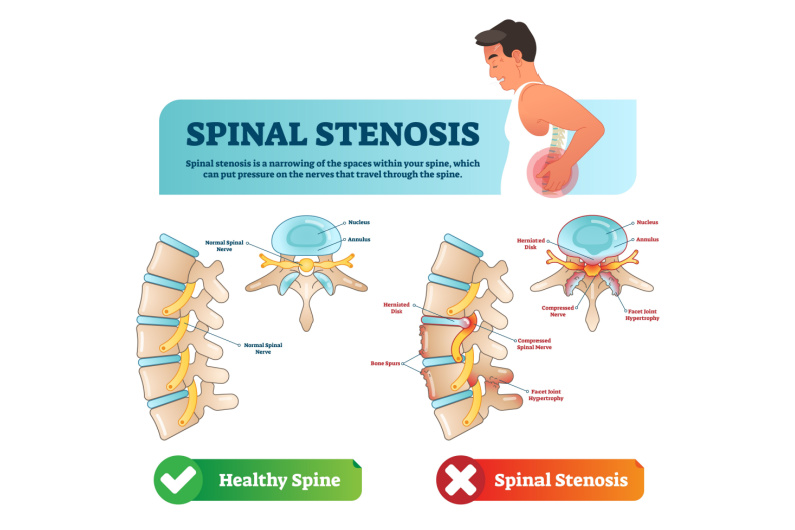Sometimes, it’s not the presence of something, but the lack of it, that is problematic. This is often the case when it comes to space.
For instance, standing in a crowded room with no space around you can be bothersome. Trying to fit items into an overstuffed suitcase is another apt example. Buying land is yet another; the more land you buy, the more you’ll pay. That’s because space is valuable.
This is also true with spinal stenosis, which is a painful condition caused by a compression (lessening of space) in your spinal canal. Let’s dig a little deeper so you can better understand what causes spinal stenosis and what you can do about it.
Common Causes
What causes the narrowing of the spinal column that results in spinal stenosis?
Usually, spinal stenosis is an acquired, rather than congenital condition. This means that it occurs as part of the aging process as you use your body and parts begin to function differently than they did when you were younger. This type of spinal stenosis normally happens after the age of 50. Causes include:
- Bone overgrowth
- Bulging or herniated discs
- Thickened ligaments
- Spinal fractures and injuries
- Spinal cysts or tumors
Spinal stenosis can also be a congenital condition, though it’s much more rare. In fact, only about ten percent of spinal stenosis cases are congenital. That having been said, for congenital instances of spinal stenosis, common causes include:
- Issues with fetal spine development
- Genetic mutation
Types of Spinal Stenosis
There are two main types of spinal stenosis:
- Lumbar spinal stenosis
- Cervical spinal stenosis
While lumbar spinal stenosis affects the lower back, cervical spinal stenosis affects the neck. Here are more details.
Lumbar Spinal Stenosis
Lumbar spinal stenosis is defined as “a narrowing of the spinal canal, compressing the nerves traveling through the lower back into the legs.”
Cervical Spinal Stenosis
Cervical spinal stenosis “occurs when the spinal canal narrows and compresses the spinal cord and is most frequently caused by degeneration associated with aging.” Affecting the nerves that travel through your upper extremities.
Normally, this occurs when a few things happen:
- The discs in the spine that separate and cushion the vertebrae dry out, reducing space between the vertebrae
- Bones and ligaments of the spine become less pliable and thicken.
Along with the growth of bone spurs that compress nerve roots, these age-related changes cause cervical spinal stenosis.
How Do I Know if I Have Spinal Stenosis?
A diagnosis from a spine specialist with the help of diagnostic imaging is the only way to know whether or not you have spinal stenosis.
Spinal Stenosis Symptoms
Symptoms that are often associated with spinal stenosis include pain, numbness, tingling, or weakness in your neck, back, arms, legs, hands, or feet. You could, however, have spinal stenosis and not even know it, especially in the early stages.
What Are My Spinal Stenosis Treatment Options?
Treatment of spinal stenosis is generally categorized into two types: surgical and nonsurgical.
Surgical treatment, such as spinal fusion or bone grafting, should be considered as a last resort after trying nonsurgical treatment.
Nonsurgical treatment encompasses a wide variety of actions, including:
- Wearing a brace
- Pain Management
- Taking NSAIDs or other OTC pain relievers
- Going to physical therapy
How Do I Know if I Need Spinal Stenosis Surgery?
Tried everything to relieve your spinal stenosis-related pain? If so, and your activities of daily living are still affected, surgery might be for you. Contact us at Desert Spine and Scoliosis Center today to uncover your options and regain control of your life!



Recent Comments